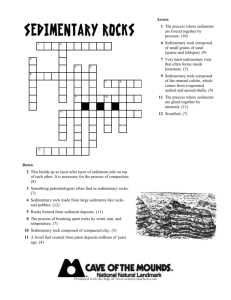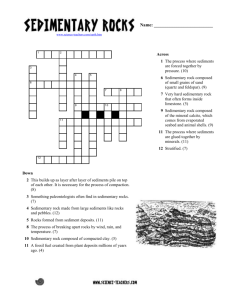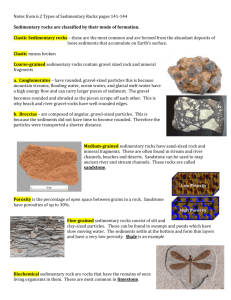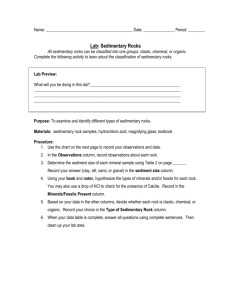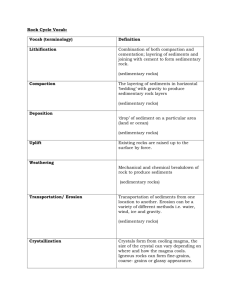Name________________________________
advertisement
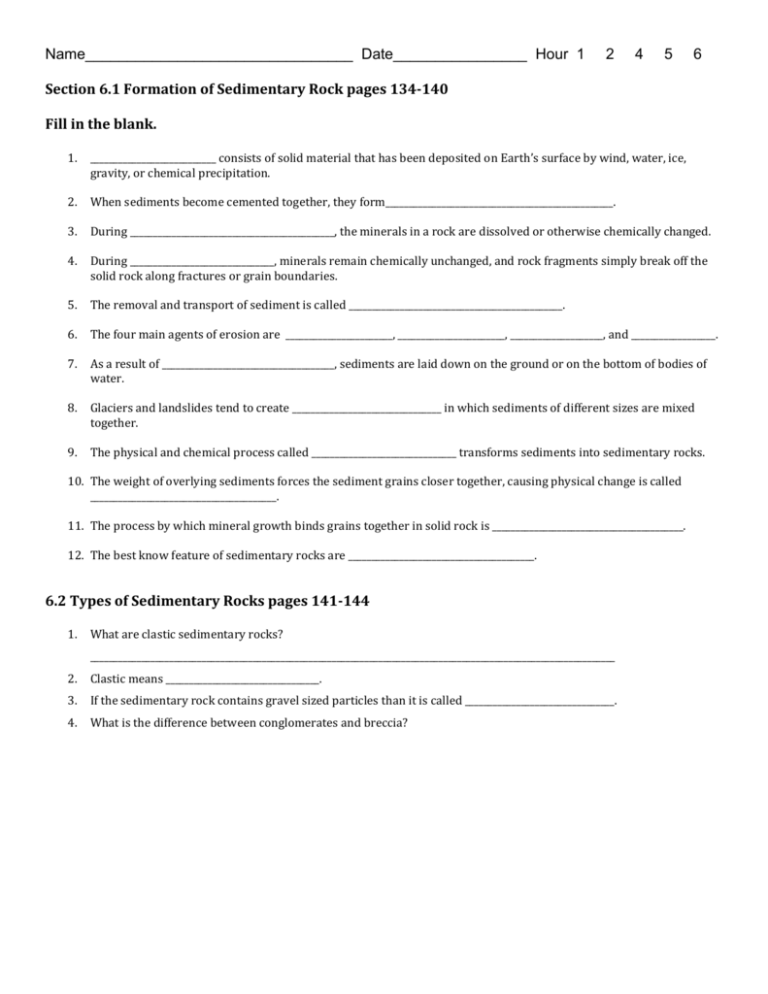
Name________________________________ Date________________ Hour 1 2 4 5 6 Section 6.1 Formation of Sedimentary Rock pages 134-140 Fill in the blank. 1. ___________________________ consists of solid material that has been deposited on Earth’s surface by wind, water, ice, gravity, or chemical precipitation. 2. When sediments become cemented together, they form_________________________________________________. 3. During ____________________________________________, the minerals in a rock are dissolved or otherwise chemically changed. 4. During _______________________________, minerals remain chemically unchanged, and rock fragments simply break off the solid rock along fractures or grain boundaries. 5. The removal and transport of sediment is called ______________________________________________. 6. The four main agents of erosion are _______________________, _______________________, ____________________, and __________________. 7. As a result of _____________________________________, sediments are laid down on the ground or on the bottom of bodies of water. 8. Glaciers and landslides tend to create ________________________________ in which sediments of different sizes are mixed together. 9. The physical and chemical process called _______________________________ transforms sediments into sedimentary rocks. 10. The weight of overlying sediments forces the sediment grains closer together, causing physical change is called ________________________________________. 11. The process by which mineral growth binds grains together in solid rock is _________________________________________. 12. The best know feature of sedimentary rocks are ________________________________________. 6.2 Types of Sedimentary Rocks pages 141-144 1. What are clastic sedimentary rocks? _________________________________________________________________________________________________________________ 2. Clastic means _________________________________. 3. If the sedimentary rock contains gravel sized particles than it is called ________________________________. 4. What is the difference between conglomerates and breccia? 5. Sandstone is what type of sedimentary rock? ____________________________________________. What type of particles make up sandstone? _________________________________________________ Where is it found? _________________________________________________________________________________________________________ 6. What is porosity? 7. Shale is what type of sedimentary rock? _________________________________________________. What type of particles make up shale? _______________________________________________________. Where is it found? 8. What is a biochemical rock?

